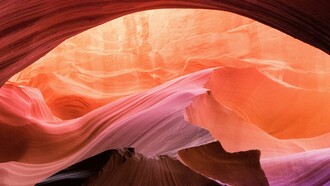I enjoy visiting museums, but a night in one has never tempted me. I don’t find it restful to be surrounded by objects, no matter how beautiful. Packed with sculpture, painting, books, and beautiful objects from a lifetime of collecting, my parents’ house in England where I grew up was quite a lot like a museum – and while it’s fascinating to visit, for a good night’s sleep I prefer a much more pared-down, modernist aesthetic.
So, when friends suggested spending three nights in Benesse House, on Naioshima Island in Japan, billed as "a museum where visitors can sleep,” I was more than a little apprehensive. However, this museum-hotel’s minimal architecture, with expanses of concrete, glass and wood – created by the deeply respected architect Tadao Ando – made the proposition much more attractive.
Our flight from Tokyo to Takamatsu lasted an hour and twenty minutes and we then caught the ferry over to Naoshima Island, once a remote fishing community, that is today best known for its many contemporary art installations and museums. The museums and beauty of the island draw many tourists, such as us, whose visits help support the local economy. A polka dot Yayoi Kusama pumpkin greets us on a pier.
From the exterior, the Benesse Museum Hotel looks like something right out of a Bond movie. And sure enough it turns out You Only Live Twice was actually filmed there. Inside, there is a lot of white: light woods, clean-lines and neutral tones. While the island itself is dotted with iconic sculptures, three museums house a great number of artworks, most in their own pavilion; the Benesse Museum Hotel itself has only nine major works on permanent display. No clutter here.
The original museum opened with guest rooms in 1992. Ando added several buildings over three decades which today house 65 guest rooms across four buildings – called Museum, Park, Beach, and Oval – each exhibiting work by artists including Hiroshi Sugimoto to Basquiat, Gerhard Richter, Shinro Ohtake, Richard Long, and David Hockney. Each wing offers different views and varying design but all in striking natural settings with sea views. Tadao Ando based his design on the concept of "coexistence of nature, art and architecture." Featuring large apertures that open up the interior to the landscape, dotted with matsu pine trees, associated with endurance and eternity, whose iconic sculptural forms have been shaped by man and nature.
“I was born in a rather rural area, so I love nature,” says Soichiro Fukutake, the billionaire arts patron behind the Benesse Museum and Hotel. “So rather than installing art in white cube museums, I like to install art in nature, art with strong messages, contemporary art especially, and find the right environment and the right architecture.”
Our bedroom was nestled up the hillside in the Oval section so the hotel required us to take a monorail to access it. James Bond modernism, no clutter, and a personal monorail to our room. I was already loving it here, and we’d only just arrived.
There are only six rooms in the Oval, and ours was one of four with a balcony and floor to ceiling windows facing the sea. There is a different artist’s work in each room, with a Richard Long untitled painting on the wall of our room. The bathroom had a shower and long bathtub, with a separate toilet compartment. There may have been other guests in other rooms of the oval during our stay, but we didn’t see or hear anyone.
The staff are discreetly friendly and very well-informed about the best ways to explore Naoshima and its surrounding islands. Benesse House also has a small light-filled spa and a gift shop.
There are a couple of different dining options, including an informal terrace restaurant. We loved the restaurant Issen, located on the ground floor of Benesse House Museum, with large windows framing the Seto Inland Sea and two large pieces on the walls: Andy Warhol Flowers, 1967 and Hiroshi Sugimoto Time Exposed, 1980-97. The dinner menu, which focuses on Kaiseki cuisine made with fresh Setouchi seafood, was by far my favourite aesthetic (not to mention culinary) experience of the entire stay on the island. Each dish is created as a piece of art.
We started with water shield plant (something I’ve never tasted before) dressed in sour mustard sauce and sweet potato. Then came conger eel rolled in kelp, with prawn, and bonito pickled in unrefined soy, with bell pepper and horse bean.
This was followed by a pike conger, egg-tofu, soup with New Zealand spinach and shredded dried plum.
Next up was an exquisite plate of assorted sashimi.
The middle dish, as it is called on the menu, was mantis shrimp, stem of taro potato and Chinese yellow chives dressed in a sour miso sauce, steamed egg custard with suppon-turtle sesame tofu, red beans and sea urchin.
The ‘grilled dish’ was Japanese beef with grilled vegetables and salad. We also sampled a ‘fried dish’ of Eggplant with Yoshino-Kudzu Sauce.
After this degustation, Imagine our relief at the sublime lightness of the dessert: Grapefruit jelly and sato-nishiki cherry.
I usually frown on people who pretend to be restaurant bloggers by endlessly snapping their food with their phones. But on this occasion, I am embarrassed to admit that I could not resist the temptation to snap. Partly, it was because each dish was just so incredibly beautiful, and partly because I have a friend in England, Isabelle, who I knew would never forgive me if I didn’t record for her this procession of culinary art.
Staying at Benesse House is as little like a night at a museum as one could ever hope for. The hotel stands out as a deliciously eccentric and decadent beacon of hospitality among the region’s more conventional local inns.
Notes
Benesse House Museum Hotel Japan, 〒761-3110 Kagawa, Kagawa District, Naoshima, 琴弾地.















